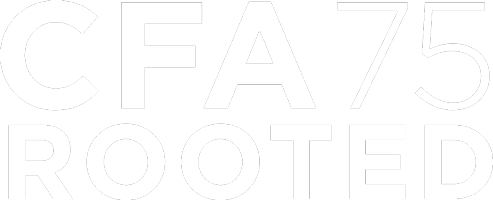by Noelle Sharp.
MAKING ART WORK: Advice for artists, from artists is a series that taps into the knowledge and experience of seasoned creatives from our community and beyond for the benefit of our students. We had the pleasure of speaking with Atlanta based graphic & web designer Wells Collins for this episode of MAKING ART WORK.
What do you wish you had known when you were a less experienced artist?
Find Mentors
The first is to find mentors. These could be your teachers, your art directors, friends, photographers, etc. Basically anyone that inspires you to be better / work harder at your craft. Mentors can also open doors, help you find jobs, and you’ll learn much faster than you would on your own. But pick your mentors wisely. In his book, The Compound Effect, Darren Hardy says, "Never ask advice of someone with whom you wouldn't want to trade places." Finding a great mentor is like looking into the future. It creates a much clearer path to your goals.
Sketch Your Ideas, and Then Sketch Some More
This sounds old school, especially in the days of iPad Pro pencils and Wacom Tablet Styluses, but it’s an essential skill in the art world. I grew up drawing, but lost the habit once I started my first job (as a digital designer). After a year or so of completely designing/thinking on a computer, I started hand-drawing letters as a battle against the same 3-4 fonts I kept returning to for web projects. A return to thinking with pencil and paper has been one of the best moves I’ve made in pursuing a design career. You can think MUCH faster, knock out hundreds of ideas in an hour, and the ability to draw quickly as a designer goes a long way. It is remarkable how often I am now the go-to illustrator for product concepts because I am practiced at quickly sketching out what the client is thinking. Sketching is also great for wireframes/layouts for an app or site, illustrations for a book, exploring layouts for campaign ads, ... the list goes on. Put a pencil (or pen or piece of chalk) back in your hand!
Say Yes to Difficult Projects
Even if you’re lacking the experience a project is going to require, jumping into the deep end will accelerate your growth as a designer. You’ll be surprised what you can do, when you HAVE to. If you’re not uncomfortable, you’re not growing.
Never Stop Learning
This is something that our teachers would constantly repeat at school, but only because its the most valuable advice!
Whether it’s teaching yourself how to code to better equip yourself for web/app design, learning how to build fonts, or learning new Adobe programs like Lightroom or Preimere, never stop exploring and teaching yourself new things. This habit helps you adapt better to new jobs and new requirements, and makes you much more valuable as a designer.
How do you find balance between creating your own art and using your creative talents for other projects (jobs, collaborations, etc.)?
Finding the balance between your own art and the work you create at your day job is hard! It’s not easy to come home after a 9-5 day and be creative. According to psychologist Ron Friedman, “Typically, we have a window of about three hours where we’re really, really focused.”
After those three key hours have been spent, our capacity to churn out fresh ideas/quality work tends to diminish. However, I’ve found that creating your own art, or making up your own personal projects is extremely beneficial. It can help you build your portfolio with the kind of work you want to be doing. You can grow skills on the side to later be used in your career. But for me, the main reason is to stay inspired. I’m sure you’ve hit a wall before, where you feel like your well of creativity has dried up. This happens to everyone. But by creating your own art, goals, or projects you can stay excited about your development and your output. Keep creating new things, especially if you're feeling stuck.
What’s the most useful advice you were given?
The most useful advice was given to me by my illustration professor at the University of Georgia, Alex Murawski. For all of his class projects, he demanded that we sketch out hundreds of ideas/concepts. He would be furious if we showed up to class with only 5 sketches. He stressed that there’s no way to know you’ve found the best solution if you haven’t tried every possible direction. While this advice was applied towards illustration, I’ve found that it works for every aspect of design. Repetition not only gives you options, but becomes practice to fine tune your skills. His advice was that quantity leads to quality.
View Collin’s full portfolio online



